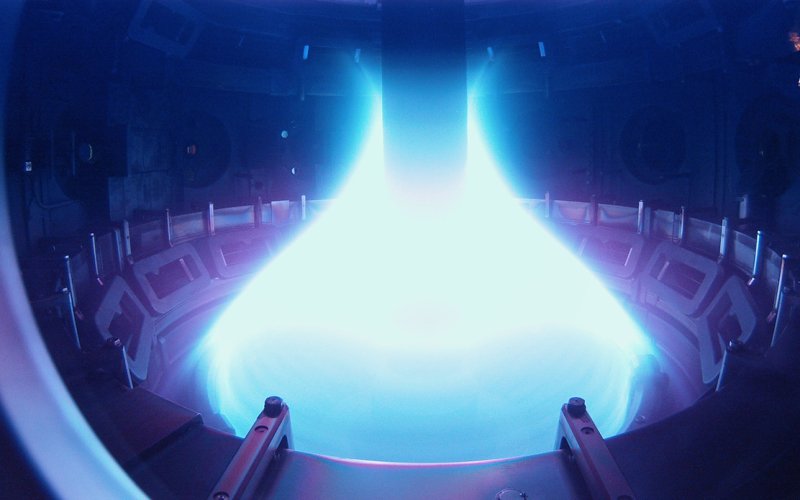The fusion reactor is supposed to have an absolutely incredible temperature of 150,000,000 degrees in its core. That’s hotter than fire, hotter than lava or molten iron, even hotter than the core of the Sun! How is it that the fusion reactor and its surroundings don’t immediately burn to ashes when it comes in contact with something so hot?
If matter was in direct contact with an object 150 million degrees hot, it would certainly not only melt, but also vaporize and immediately turn into plasma. But the extremely hot plasma core in the tokamak is not in such close contact with anything. The point is that it is effectively isolated from the tokamak chamber and the surrounding area by a layer of vacuum. The same principle works in a conventional light bulb or halogen fluorescent lamp — the heated tungsten filament inside a conventional light bulb is about 2,500 °C, inside a halogen fluorescent lamp it is nearly 3,000 °C but their surface is not as hot by far. In order for heat to transfer from one object to another, they must be in close contact. The oscillation of the atoms (which is essentially the temperature) is transferred to the atoms of the other object. If there is something between one object and another that conducts heat only reluctantly (i.e. an insulation), the other object will only heat up slowly. And the best insulation is a vacuum. There are very few atoms in it that could heat up from the red-hot plasma and transfer this extreme temperature to the walls of the tokamak and their surroundings. True, even a few atoms will transfer some heat. And heat is also spread by electromagnetic radiation. Thanks to this, the walls of the reactor have a temperature of around 1 to 2 thousand degrees. Even this temperature could damage a lot, which is why the walls of the tokamak contain active cooling. This is a key issue because there are the superconducting coils a short distance from the vacuum chamber, whose temperature should not exceed a mere four degrees above absolute zero. Thanks to vacuum insulation and cooling, the tokamak does not burn, although the temperature inside is much higher than in the core of the Sun.
Want to ask something?
Send us an e-mail with the subject “Physics mysteries” to the address:
We can't wait to tackle your interesting questions!





